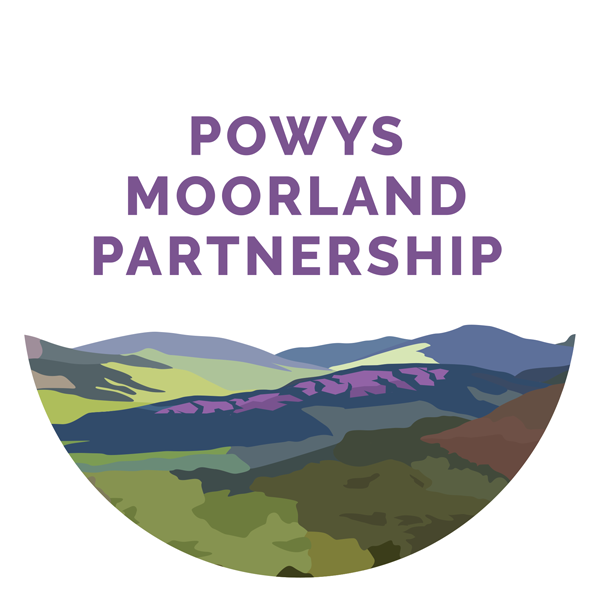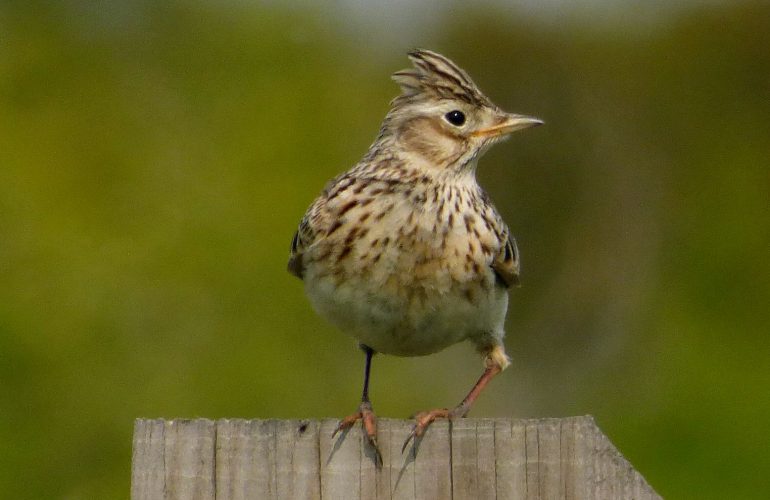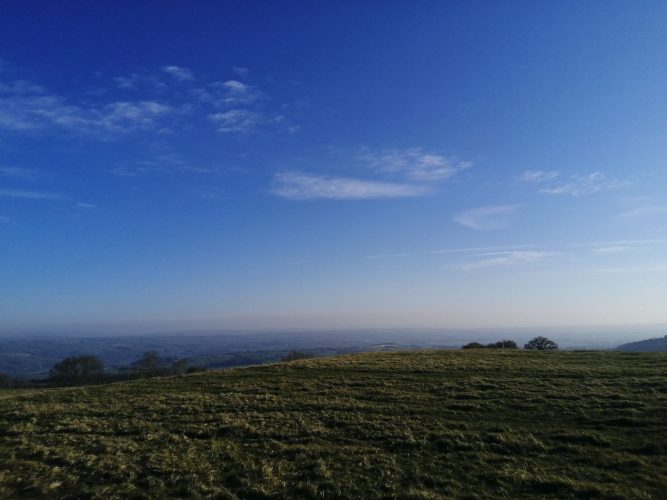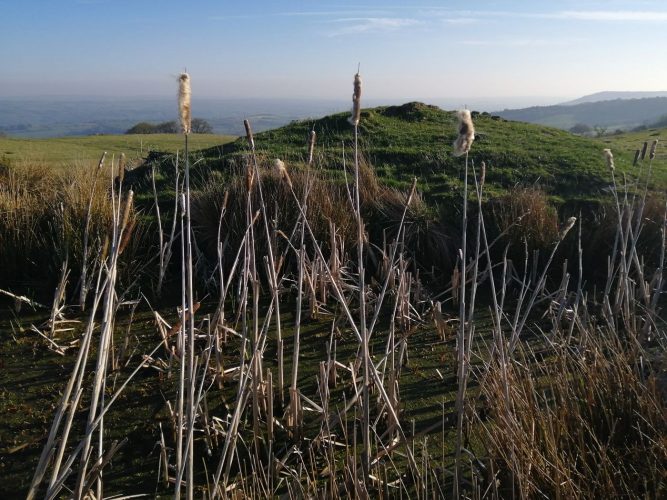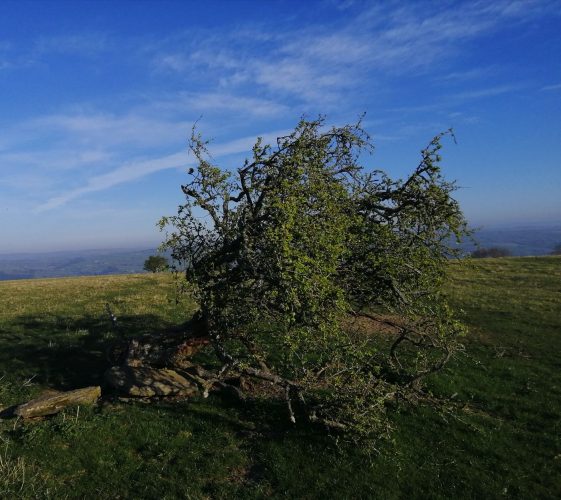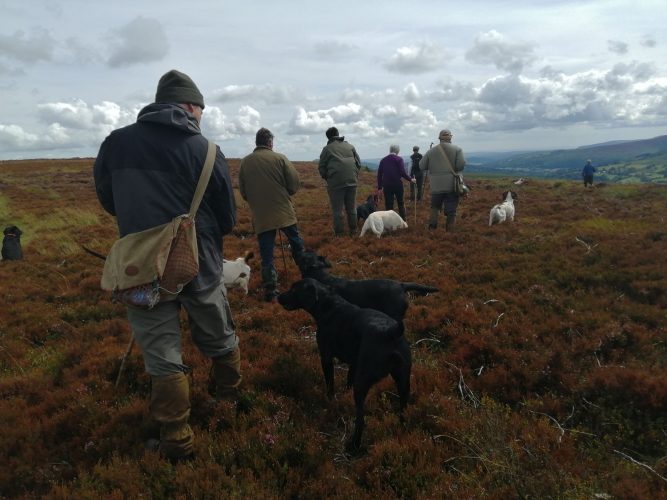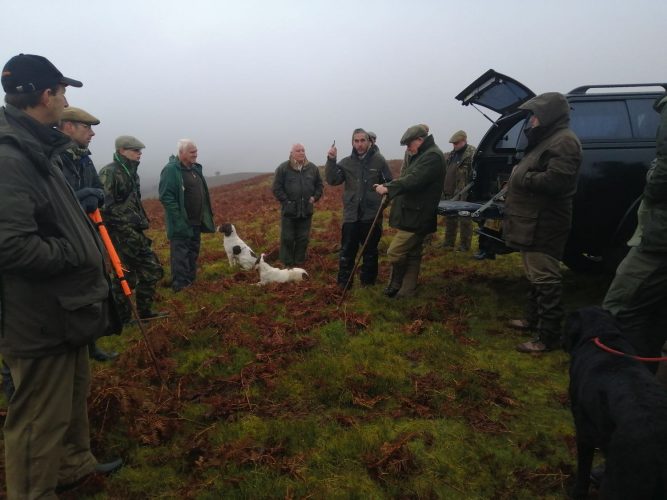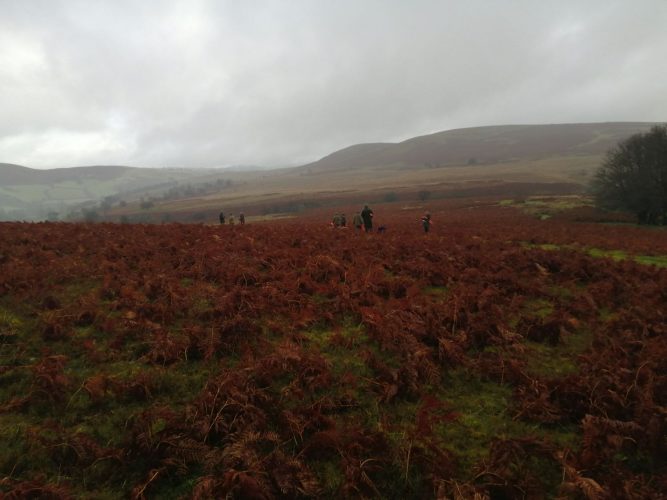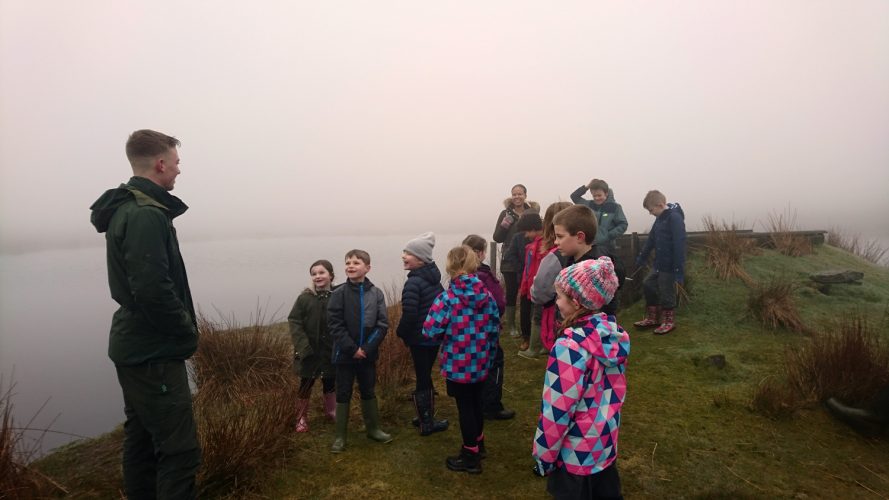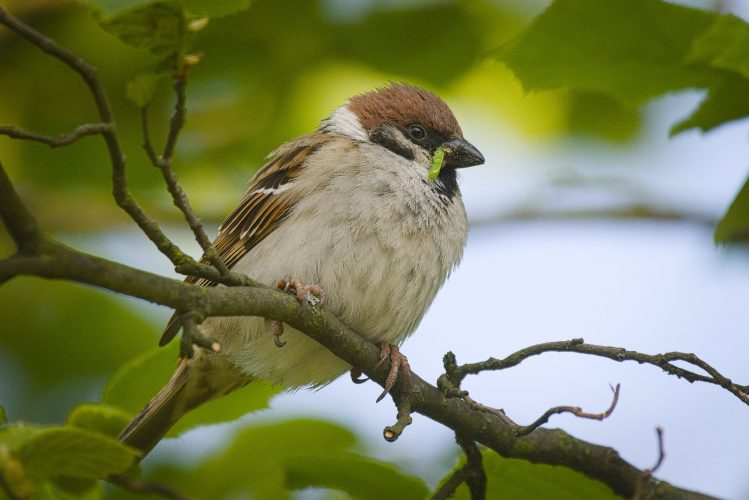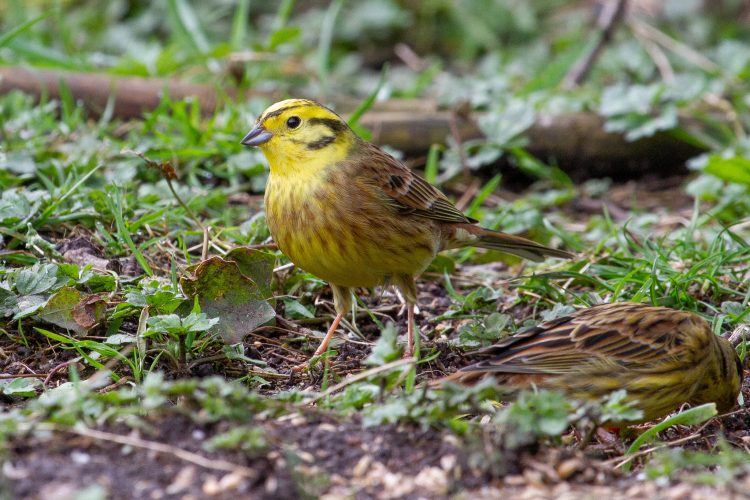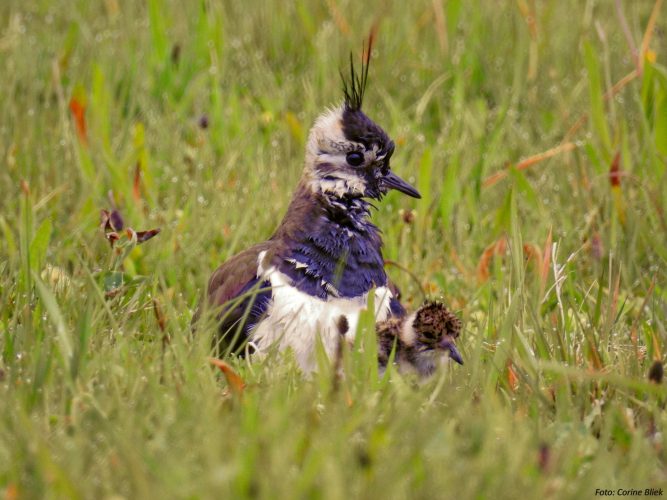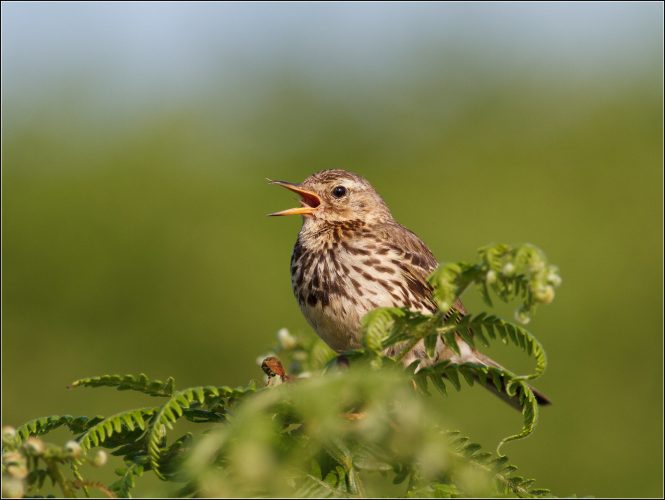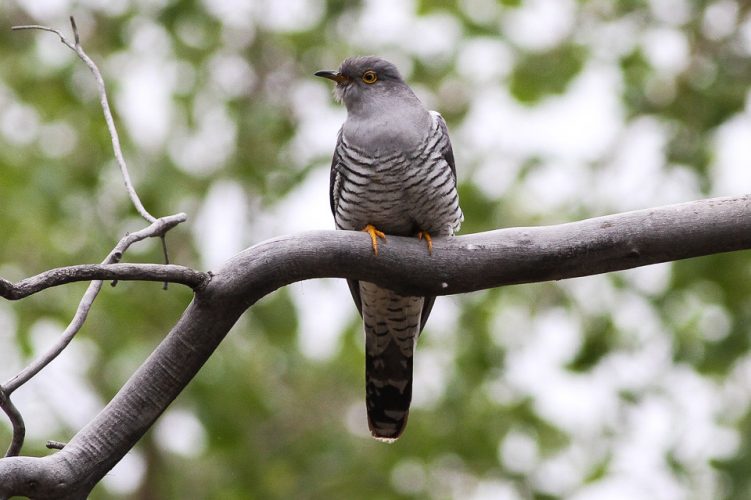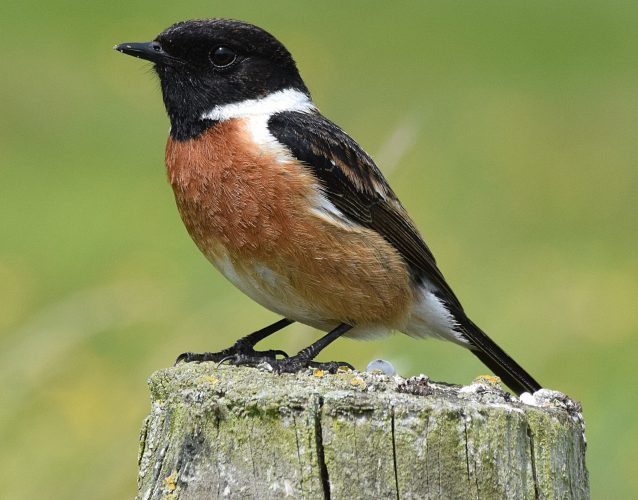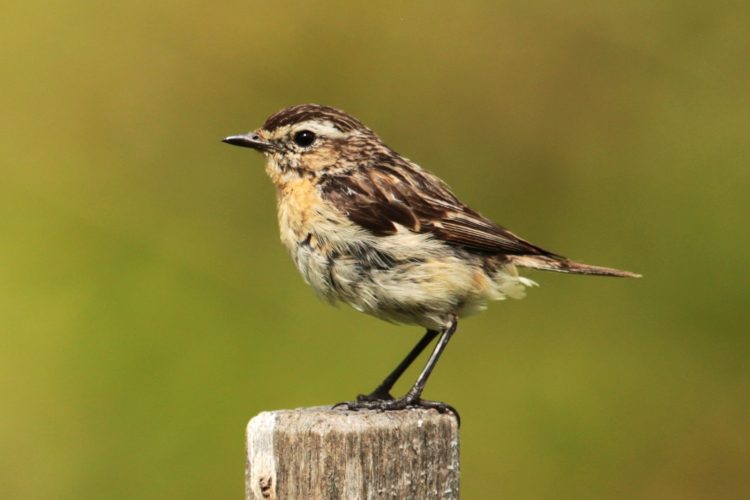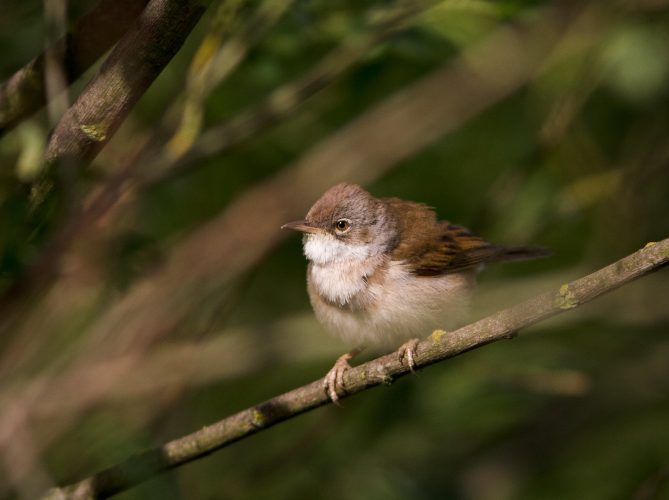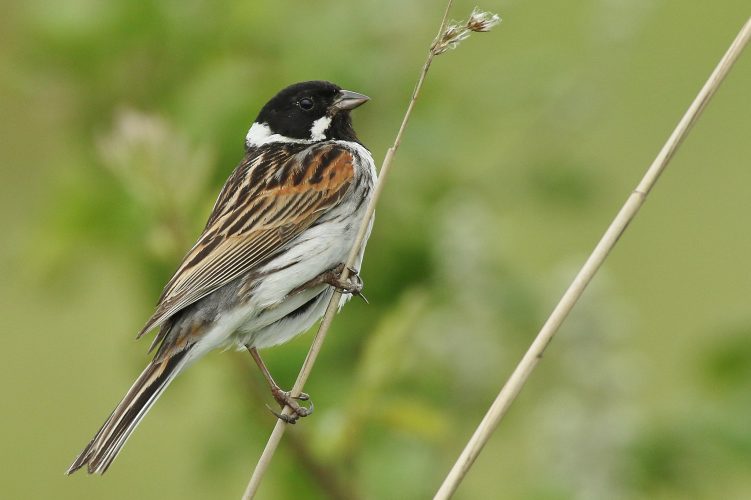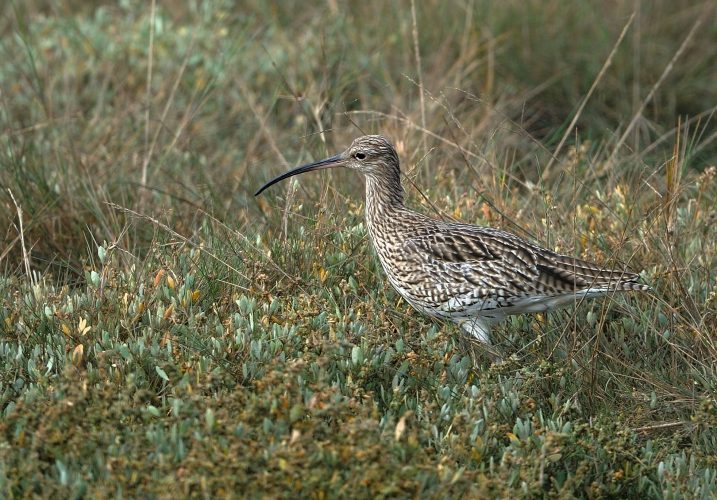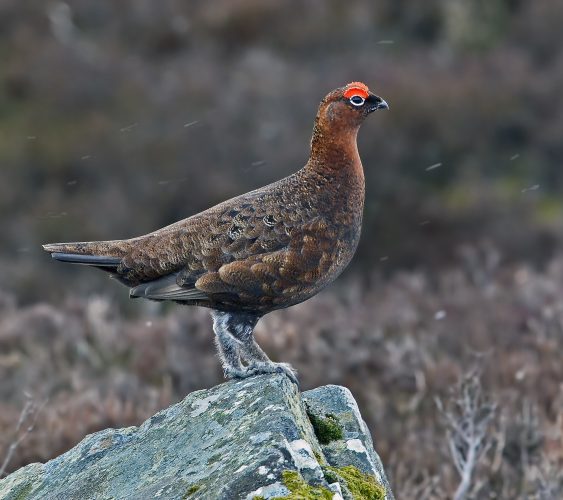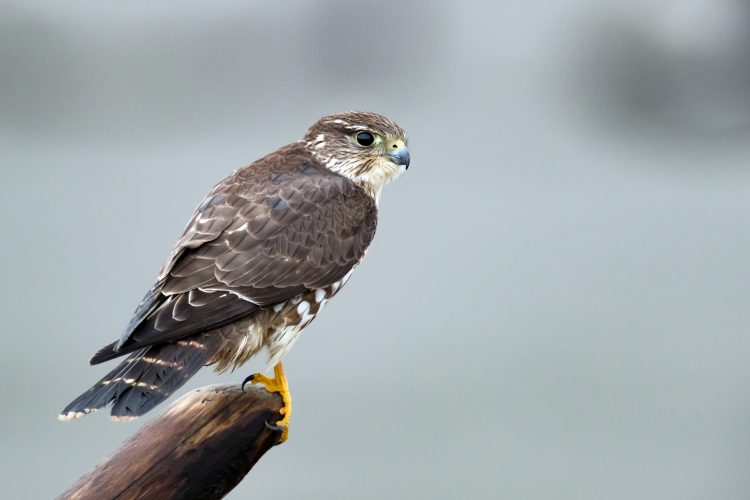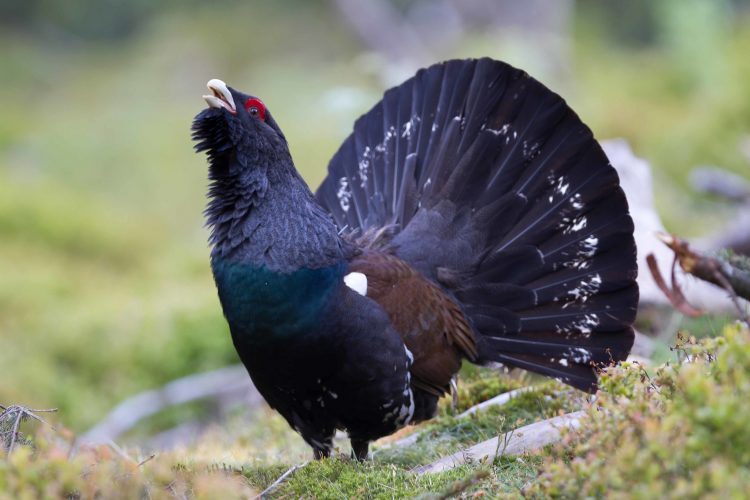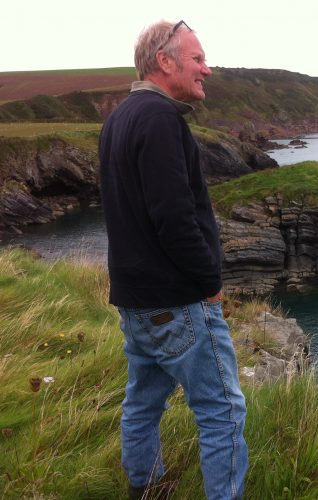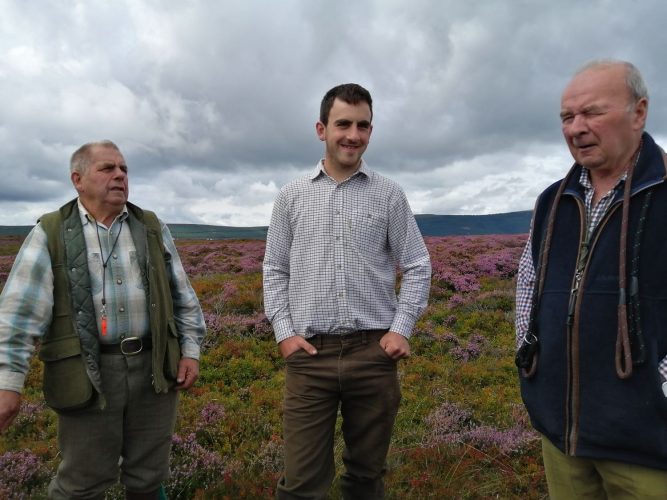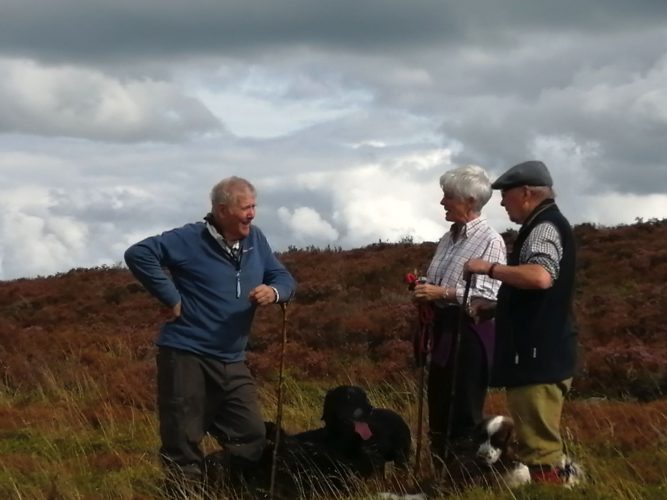In a garden, near Elan Village in Radnor, against the soundscape of the constant rustling of an Alder Tree leaves, the bleating of sheep and the occasional bumble bee, Moorland Manager David Thomas, Bird Conservationist Nick Myhill and Project Facilitator Catherine Hughes discuss and reflect on the last 3 years of the Powys Moorland Partnership SMS project – its overall performance, its achievements, some frustrations, some lessons learnt and their future hopes.
Sound recordist – Jeremy Creighton Herbert
Episode 1:
Episode 2:
Episode 3:
Pool Hill & Beacon Hill
There were some weather aborted visits to the 4000 acres of Pool Hill and Beacon Hill Moor in Mid Wales north west of Knighton; on the filming day flying from the trig point on Beacon Hill the drone had a real struggle with strong gusting winds from the west and had to fly low.
30th September 2018
Voiceover by David Thomas
Drone Pilot: Theo Spearman
Creative Director: Jeremy Creighton Herbert
Garn Wen & Bal Mawr
This drone footage of the Moorlands near Llantony Abbey, known as Garn Wen, Bal-bach & Bal Mawr, in the Black Mountains. It took several months to get favourable conditions on the approx. 2000 acres of Garn Wen and Bal Mawr Moor 5 miles north of Abergavenny running above the Llanthony Valley. However one May morning it was a beautiful Still day so the drone pilot was able to fly high.
30th September 2018
Drone Pilot: Theo Spearman
Creative Director: Jeremy Creighton Herbert
The sound of Moorlands
Listen to the skylarks on the Moorlands in April
The skylarks songs are hard to miss on the Moorlands as they’re everywhere but the birds themselves are much harder to spot in the landscape.
The skylarks are small and brown and hide pretty well. You can find them on farmland, grassland, heathland as well as moorlands. They are endangered since their recent and dramatic population decline and are now on RSPB’s Red List.
Beaters day
“Being so accepted by a community made up of such a diverse group of people was really humbling,” says Sharon, who joined in on her first ever beating season last autumn on one of the moors involved in the Powys Moorland Partnership project which operate a shoot. She has also just done a season lambing too.
Coming from a farming background in Somerset, Sharon – who left home at 18 and trained to be a chartered accountant in London for 15 years – has always wanted to get better connected to her surrounding landscape in Hay, and now that her children are older, she has rolled up her sleeves and got involved.
Although she wasn’t sure what to expect, she can’t emphasise enough how welcomed she was made to feel from the beating community – who flush birds in the direction of the guns on a shoot day – and who come from all walks of life.
“Their lives, stores, their jobs – many of which I never knew existed – has been absolutely fascinating,” she says, adding how touched she was in how interested they were in her.
“They explained everything to me and helped me understand what happened during the day. I quickly saw how they were often immersed in sometimes the cruelest of weather,” she says, adding that to many it’s a way of life, and a way of keeping a safe food supply ready in the freezer. “Also inspiring to see many youngsters out too,” she says.
The stunning ever-changing landscapes are amazing, explains Sharon, who witnessed the constantly changing views as the clouds danced in the skies as they covered miles of ground across the heather moorland.
“Being outside all day in all weathers with no protection makes you feel alive, aware of all your senses. One day I was sunburnt, with dust in my eyes, the next I was drenched in rain and covered in mud. You feel part of the elements, she says. It’s a powerful feeling that takes your mind somewhere else. And then it was the feeling when you got home. The exhaustion, the permission to sit down and relax, such a treat. A welcome feeling.
Sharon admits that shooting birds isn’t something she is comfortable with, but getting involved has opened her eyes as to why it happens and why income from the guns is needed. It’s quite brutal out there with all the challenging from the predators for both the ground nesting birds and the sheep and I guess the need to strive for a balanced countryside is well illustrated.
“I know, after helping with the lambing, how heartbreaking it is to lose lambs when you spend so much time with them to help them get a good start.
“I was again made very welcome on the farms I helped lambing on this spring and again so humbled to be trusted to help with so many of the jobs. The hours that they work and the little sleep that they had was an eye opener,” says Sharon, who is so pleased that farmers have been recognised as key workers in the current coronaVirus situation.
Sharon now feels that she has two markers in her diary, autumn and spring. “It makes me feel closer to the seasons and feel part of the landscapes around me where so much is going on. I feel connected, even liberated. I feel that my life has more depth thanks to the farmers and the gamekeepers. I also feel fitter and I even look forward to putting my head back into the books to do the accounts!”
Better connectivity needed to help Welsh Moorlands flourish
More joined up management of the Welsh moors creating a continuous landscape to restore habitats is the challenge of recovering bird species, says Huw Lavin, who started as an apprentice on the Powys Moorland Partnership project 3 years ago.
With a keen interest in game-keepering from school days, Huw spent weekends and all holiday’s out with a local keeper to learn all the skills needed to protect grouse and all other ground nesting birds.
“It’s the only job I’ve ever wanted,” he says, and after two years at Newton Rigg college he landed a full-time job as a keeper on a grouse moor in Wales which is a rare find.
The main problem in Wales is that grouse has disappeared from most of the heather moorlands over the past 30 years as grouse shooting declined, but Huw believes that if we really want to see them recover along with other ground nesting birds there is still time, just, but many more people are needed on the ground.
He believes that in just three years, despite the weather not being conducive to increasing the grouse population, the number overall has flourished once the management to restore the habitats and keep predators under control was implemented.
“We need more people doing the same thing so that we connect up larger areas of land and create a proper continuous landscape scale programme to recover some key upland bird species,” he says.
But Huw believes the job of a gamekeeper is so much bigger than ever and probably needs re-naming as the role does so much more to boost biodiversity.
“We are very much in the spotlight of the media so we must get our story over in a positive way,” he says, and that means taking in everyone’s point of view. It’s not the fault of the public on how they have formed their views with all the pressure that is out there but, we have a responsibility to make sure we message effectively and not aggressively and that has to start with the children.
Huw has hosted several groups of children from Hay and Clyro primary school to explain his work.
“What is great is that they get it and understand that to protect the ground nesting birds we have to protect them from the masses of predators that the Welsh countryside is full of,” says Huw, who explains that to manage the homes of the grouse, a mosaic of heather needs to be created so there is short heather for the food source and longer heather for shelter and nesting.
We have to keep engaging with the public and find different ways of helping people understand the complexities of moorland management especially as Welsh Government is encouraging more people to get outside and connect with nature.
“It’s a special place to work and moorlands are magical so it’s right that more people should experience it, but respecting each other is going to be the biggest challenge.”
Huw has now moved to a top well established grouse moor in the Angus Glens of Scotland as a grouse keeper where he will be one of 11 keepers.
Catherine Hughes
Sustainable Management Scheme facilitator
October Bird News by Nick Myhill
I have recently completed the task of entering all my data from 18 ‘constant search’ type surveys on four moorland sites in Radnorshire. This has been a painstaking task, not least because it required me to catch up with modern technology! I have well over 3,000 individual bird observations related to indications of breeding activity and other habitat use relating to the survival of birds in our modern countryside.
The bad news is that many species are in decline here in Radnorshire, just as they are throughout Britain, as indicated in the latest ‘State of Nature’ report.
But let me try and draw a few positives from my data.
Firstly, we do have an increasingly clear understanding of what the solutions to the problem are. In fact, you could say it in a word: ‘mixed farming’! Okay, that’s two words. But it’s still a remarkably simple start. What has been lost in recent decades is habitat diversity in our countryside. For example, where are the stubble fields in Radnorshire? No stubble fields for birds to survive the winter on, and is it surprising that Yellowhammers and Tree Sparrows are hard to find these days?
So before you object that it’s not that simple, let me assure you it is. The farm near Knighton I first worked on in the early 1970s still grows their own oats in fields full of weeds… and they have a thriving population of both these species. Just as a result of good habitat diversity on one farm in the middle of all the rest!
The same point could be made about keeping some undrained rushy fields and patches of wetland. Another farmer I know who farms not a million miles from Painscastle does mixed farming and has kept some undrained wetlands… and he has breeding Lapwing which no one else does!
My point is that by looking carefully at the data, we can come up with good advice to politicians seeking to reverse the decline in wildlife. And fortunately there are such, in Welsh Government, running the Sustainable Management Schemes of which the PMP is part.
Here’s a second chink of good news. Some of the species that are in general decline are still thriving on our moorlands. A good example is the humble Skylark. A friend remarked to me recently that it was ages since she’d heard one. I was able to reassure her that they are doing pretty well up on the moors of Radnorshire. So is the Meadow Pipit. So is the Cuckoo. Of course, it’s worrying that this is a last refuge for such species, but it is a consolation and a clue.
With other species – such as Stonechat, Whinchat, Tree Pipit, Whitethroat and Reed Bunting – the data points us to how habitat can be best managed on the moorlands to optimise their numbers. In this case, the answer seems to be to have a good mixture of gorsy, scrubby heath (which we call ‘ffridd’) in amongst the well-grazed or regularly-cut areas of grassland and heather.
In the case of ground-nesting birds – such as Curlew, Red Grouse, Merlin – keeping populations of omnivorous predators such as Crows and Foxes in balance with other species must also be taken into account as a factor. I understand from the Royal Society for the Protection of Birds (RSPB) that the same applies if the Capercaillie is to survive in Scotland.
In short, I’m hoping the experience of the Powys Moorland Partnership has provided us all – as members of the public, walkers, conservationists, farmers, moorkeepers or politicians – with some clearer understanding of the way forward. What I’m trying to say is that I don’t believe the solutions are all that far out of our reach.
The Beacon Hill community
It is a way of life where time has stood still. As I rode alongside Anne who has been riding these Radnorshire hills for over 60 years, she believes very little has changed.
At 85 years of age, she believes that other than it being a lot drier than it was, and the bracken continuing its fight to take over the heather, everything else is pretty much the same. With 10 of us on horseback plus another 20 or so on foot with dogs, the stunning views as the weather goes through all seasons in one day is relished by everyone who lap up the energy of these heather coated hills. And with 23 grouse flying over our heads as we canter along, the day captures the magic of these diverse landscapes.
It never seems to fade; the excitement of being up on the open hills where you can look across to Snowdonia, Aberystwyth around to the Shropshire hills and beyond. “You would pay a lot of money to do what we are doing today” said one man as we chatted about the rising cost of mental health in Wales. This community knows each other well and completely love their days together with their beloved horses. In fact a group of them ride every August from the area to Ynys Las beach near Borth staying in barns using sleeping bags covering 80 miles over 3 days and have done so for the past 20 years.
Darren and Sheila joined the day. They moved recently from the hustle and bustle of the south east and have thrown themselves into the community and clearly loving every minute of it and in so doing are already part of the community. “We are just so welcomed here and it was an opportunity to start riding again after many years,” says Sheila, who had a bad accident many years ago. Sheila helps out with the local farmer at lambing times and Darren has got involved in a number of jobs from clearing streams to restoring ancient monuments on farmland.
As the day closes, the sun lowers there was a silence as the horses lower their heads and move downhill towards home. For me there was a longing to be horizontal with a guaranteed and exceptionally well earned sleep. Thank you.
Catherine Hughes, Powys Moorland Partnership facilitator
Annual gathering on Bal Bach & Bal Mawr
It’s one day in August every year that pulls a community together to picnic on Bal Bach Bal Mawr moor in the Llanthony valley, near Abergavenny. Over the past 30 years this group – some of whom were in the school together in Cardiganshire bought the moor and they are passionate about the wonderful landscapes this location offers which looks out across the Brecon Beacons including the Skirrid and Sugar loaf and over to the estuary in Chepstow. Together with the local moorland manager Shaun Smith and his dad, Tony, the former keeper, the day is a special day in the calendar where they all come together and make their way up the hill to catch up with each other and take stock of the hill.
Once a thriving grouse moor when heather almost carpeted the hill, bracken has certainly encroached and outcompeted the heather in a number of places but under the project restoring its condition is under way and there are acres of diverse habitats to help recover a range of bird species. Arwyn Davies heads up the responsibilities for the moor and sees the project more as a conservation initiative to help recover the heather before it’s lost forever which would hail the end of the red grouse who lives here 12 months of the year and feeds only on heather and which supports other wading birds under the same management.
There has been no shooting here for a few years and this year was no different. Although there was lots more heather management with a good dry month of March allowing lots of burns to take place to regenerate the heather, it was the first 2 weeks of cold wet weather in June that meant that the young chicks didn’t survive. But that seems to be the same story everywhere.
Putting the work in now means there is a chance of restoring this heather even though that won’t be apparent or visible for at least another decade or two.
Keep in touch, get involved.
We will be putting on various events over the next 12 months. If you would like to get involved, have some ideas please contact Catherine on urmyc.sdnalroomsywop@tcatnoc

